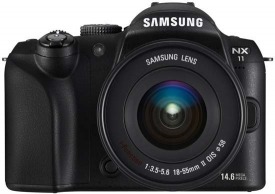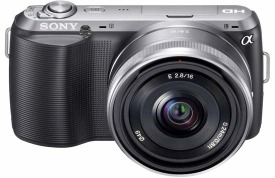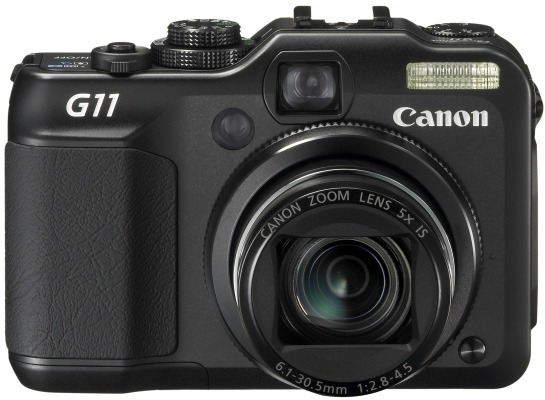Dispensing with temptation
26th January 2012The compact system camera arena is a burgeoning one with many manufacturers having followed Olympus into the fray. In latter months of last year, Nikon finally took the plunge though Canon have yet to do the same. Seeing offers on Olympus E-PL1 kits with a 14-42 mm zoom lens had me tempted, particularly with a price tag of the order of £250. In fact, I even got to looking into the competition too and a shortlist emerged. This also featured the Samsung NX-11 and the Sony NEX-C3 as well as the big brother of the latter, the NEX-5N.

What eventually countered the allure of shiny objects was the question as to why I needed such an item. After all, I already possess a Pentax K10D DSLR and a Canon Powershot G11 and these have been satisfying my photographic needs for a while now. The DSLR may date from 2007 but it is still working well for me and, if it ever needed replacing, I’d be going for another Pentax with the K-5 being a strong contender. The Canon is doing what’s asked of it so the recent launching of the G1 X isn’t so tempting either.
The whole dalliance has me wondering about how photographic equipment changeovers come about. After all, it was around a decade ago with the DSLR revolution was in the offing if not in progress. Until then, film photography was predominant but it looks as if it got as far as it could from a technological point of view when I look back at what happened. The digital photography area was new and untapped so moving there offered new possibilities and purchases more easily justified. The end result is that very few film cameras are being made nowadays. Ironically, it’s film photography that now is untrammelled terrain for many and it is holding its own too in an era when digital photography predominates.
The same sort of newness that came with digital photography also applies to CSC‘s to a certain extent. From the heritage of half-frame 35 mm film photography, Olympus has fashioned a different type of digital camera: essentially a compact with interchangeable lenses. Was it the fact that I have no CSC that caused me to be tempted and has it happened to others too? Also, is that what got digital photography going in the first place?
It almost feels as if camera manufacturers have to keep bringing to market new models and new types of camera in order to stay in business. After all, Minolta had to sell its camera division to Sony when they failed to get going in the DSLR market quickly enough. The same thing might have happened to Pentax too with the marque passing to first to Hoya, and then to Ricoh after the firm lost its independence.
What doesn’t help is the lack of longevity of camera models. The coming of digital photography has exacerbated this situated with models being launched at a frenetic rate. In the days of film photography, a model could last on the market for a few years and there was once a time when a twenty year lifetime wouldn’t have looked so ridiculous though there were incremental improvements made over that time too. For instance, a Pentax K1000 wouldn’t be exactly the same at the end of its production run as it was at the start though the model number may be the same. That world is gone.
Camera types have done better with the SLR design lasting around 50 years so far. However, mirror-less camera technology is adding pressure like never before. Even compact cameras allow live TTL type viewing and Olympus dug into its film camera heritage to add an interchangeable lens mount to give us the first E-P1. The original PEN cameras were half-frame 35 mm affairs and, appropriately enough, their descendants have small sensors in the micro four thirds mould. Then, there’s Sony’s efforts with translucent mirrors that do not move like their SLR counterparts. Canon tried this in the 1980’s with film cameras but never pursued the genre. After that, there are mirror-less SLR-style cameras from Samsung and Panasonic that make you wonder if a full size equivalent is in the offing with live viewing and an electronic viewfinder. Olympus is doing a teaser advertising campaign at the moment and it has some wondering if an OM-D is in the offing.

In parallel with all this, Sony is making a good impression with their CSC’s, the NEX series. These have APS-C sized sensors like many DSLR’s and in compact bodies as well. However, the feel very much is that of a compact camera and some have complained of a like of buttons on them though the photographic quality is very good. Samsung have gone for the same sensor size in their NX-11 thought they have gone for SLR styling. That may be more suitable for some than having to find settings buried in menus.
In summary, we are in an exciting if unnerving time in camera technology at the moment. On one hand, we are seeing a great deal of miniaturisation and what formerly were still cameras can do movie making as well. The latter may not be an interest of mine and it looks like a time-consuming hobby too. A lot is in flux right now and a recent court case reminded us of the difficulties in doing original work these days with image processing in Photoshop forming the basis of a victorious copyright claim. Because the number of images that are getting created everywhere, it could be hard for some to avoid this one and that could be exacerbated if the government changes the law so that intellectual property claims can be processed in the small claims courts. That sort of thing makes film photography seem attractive and it does seem that it isn’t disappearing either, even if Kodak has its financial problems. Novelty seems to change photographic tastes and it seems that film photography is novel again. It’s a changing world and who knows where it take us. Maybe a new DSLR body might make a good purchase in case CSC’s usurp their place entirely. Photographic technology is interesting yet again.
A new acquisition
16th January 2010Back in the early days of this blog, I mulled over the idea of having a high-end digital compact camera to complement a DSLR that then was delivering very dusty images; that Canon EOS 10D was cleaned since then and comes in for occasional use to this day. That was nearly three years ago and a first generation Ricoh GR Digital was the item that then was catching my eye. At the time, I failed to justify spending that much money on such a thing and ended up acquiring a new Pentax K10D DSLR instead. The question that rattled about my head was this: what was the point of spending DSLR money on a compact camera? Its one that never really went away and comes to mind when you see the prices of interchangeable lens compacts like Olympus’ Pen and equivalent offerings from Panasonic and Ricoh (there, it’s interchangeable lens units rather than actual lenses).
The strongest counterpoint to the cost conundrum is the little matter of size. SLR (film or digital) cameras are sizeable things and there is a place for having something that drops into a pocket. It is that which has propelled me into taking delivery of a Canon PowerShot G11. It may need a good-sized pocket but, unless you are going out with no jacket, it shouldn’t be a problem most of the time. For those shorter sorties when I don’t fancy bringing an SLR out, it well-built and looks the business though some acclimatisation is in order to make the best of the knobs, buttons and menus. Nevertheless, the included manual will help with this process (there’s a paper quick start guide and more detailed documentation on CD).

The camera hasn’t seen extensive use just yet so here are a few early impressions. Firstly, there’s the matter of size: it’s even smaller than the first camera that I ever bought (more than fifteen years ago) and that was a Ricoh 35 mm compact film camera. That comparison is even more striking when you consider the feature sets. The Ricoh was a fixed 35 mm lens affair with things like date and time stamping, ISO choice and a nod towards scenic mode selection. In contrast, the much newer Canon is loaded with the sorts of things that normally are found almost exclusively on SLR’s, starting with its effective 28-140 mm focal length range.
Exposure modes such as manual, aperture priority and shutter priority complement scene-based modes and another for movies (not a concern of mine, it has to be said). As if that weren’t enough, there’s exposure compensation too. It came as a surprise to me to find a form of manual focussing included though it is not as convenient as turning a focussing ring on a lens. You can see the inbuilt flash above but there’s also a hotshoe and a place to attach a tripod too. Settings like white balance and file format are accessed using the Function/Set button with the lever underneath the shutter release button controlling the focal length of the lens. In addition, there’s also image stabilisation and that’s important when you’re using live view to compose a photo. Spot metering and focal point selection are other things that find their way into the package. Some may be excited by other things but exposure and focussing are essential for any photographic efforts.
An optical viewfinder is included and it has dioptre settings too but my first impressions are that live view though the rear screen trumps it and I see no need for such things on SLR’s. That also flips out from the camera body and can be rotated either for self-portraiture or for folding back in on the camera body for use like a non-articulated screen. Another use is with those occasions when the subject means holding the camera in positions that would be impossible with a conventional screen; holding the camera over your head or down low on the ground are the sorts of situations that come to mind.
Of course, there’s more there than those features that I have listed and the specifications on the Canon website are as good a place to start as any. So far, my only testing has been of the cursory checks variety and to make sure that the thing works properly. Still, this has given me more of a feel for the camera and how it operates. As you’d expect, high ISO settings are noisy but a bigger surprise was that the smallest aperture setting is f/8. Being used to SLR’s, I was expecting to get f/16 and its like on there but a spot of internet investigation showed that I should have been taking the size of the sensor into account with my expectations. Any trials so far have been in dull weather so I’d need to use it in a wider variety of conditions before giving it the sort of wider appraisal that you’d find in the likes Outdoor Photography (who liked it, it has to be said). For what it’s worth, I have found no major criticism so far though I cannot see it usurping my SLR’s but that never was the intention anyway.